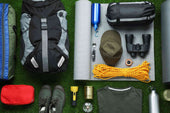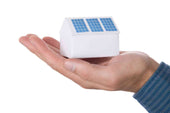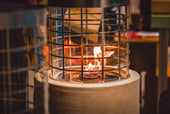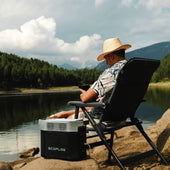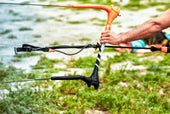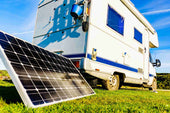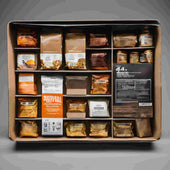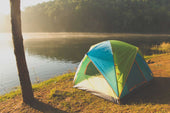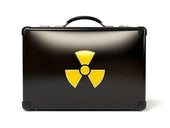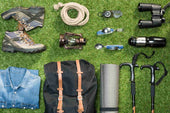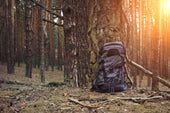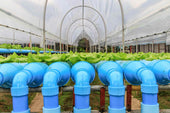Understanding Survivalism
It started in the 1960s when individuals or groups in America were warned by possible emergencies, including political or social orders from local to international.
It can also apply to preparing for emergencies like job loss, being stranded in remote and wild places, or harsh weather conditions.
What is a Survivalist?
A survivalist is someone who constantly prepares for doomsday events in the future. They stockpile food, medicine, or emergency kits.
Their main goal is to survive any possible emergencies. Survivalism emphasizes self-reliance or self-sufficiency and the acquisition of survival skills and knowledge.
Survivalists acquire emergency medical training and self-defense skills, stockpile food and water, and use survival retreats, such as underground shelters, as catastrophe getaways.
Survivalists erupted when nuclear problems arose from the Cold War and high inflation rates. Additionally, urbanization became a threat, considered unsustainable, causing supply shortages and disorder in urban centers.
Characteristic Traits Of The Survivalist
Survivalists possess attributes that work together to embody their overall persona. As mentioned, it is a mindset, but sometimes some traits just come out naturally.
The following list of character traits is shared among the personality and character of the survivalist prepper:

Adaptability
Curiosity
Calmness
Neither a Pessimist nor a Pessimist
Resilience after Mistakes
Intuition
Determination to Survive
Breaking the Rules
Resolve
Ability to Make Decisions
Plan and Foresight
Survivalism Skill Sets
Survival abilities start with something other than building a shelter or bonfire. You must grow your survival abilities, watch them improve, and worry less.
Often, what makes you worry only makes you stronger. Here are skill sets you should hone to establish self-reliance, self-sufficiency, independence, or whatever you call it.

Grow Your Food
Know the Earth's Rhythm
Green Your Energy Supply
Choose Independent and Natural Health
Get Skilled
- Survival training in different environments in urban or rural areas
- Basic medical training, including CPR
- Herbology and gardening
- Electrical activity, such as how to repair a radio
- Machinery maintenance
- Chemistry
- Cartography and map reading
- Archery
- DIY anything
Plot a Communication Plan
Look for Allies
Honor Indigenous Wisdom
Play Defense
Contribute
Put Into Practice
8 Survival Tips

1. Master your attitude
A survival situation is not a time to panic. Instead, it is best to focus on what can be done and maintain a proactive and positive outlook.
First, develop a plan. Inventory your resources, such as water, food, and medicine.
Check what other tasks are needed, such as making your shelter and fire for warmth. Be determined to keep your thoughts on the tasks at hand. Don't let anxiety give you an option.
2. Make Shelter for Insulation and Shade
Build an adequate shelter that will keep you warm on cold nights and protect you from the elements. Make your shelter as big as the number of people it will house.
In building it, make it a simple lean-to. You can use a fallen tree or a strong branch as a framework, then use sticks close together for the sides. To ass insulation, cover the sides with bark, leaves, pine needles, moss, or all other thick materials. Add similar insulation for its base. The wider, the better.
Dig a few inches below the soil for the shade to find the more ideal ground. Use sticks or limbs to make a shelter a little above the floor. Cover one side with available materials such as leaves, bark, a poncho, an emergency sleeping bag, or a blanket. Then, lie on the excellent ground underneath the shade.
3. Find clean water resources and purify them.
The holy grail of survival is finding clean water. You are lucky to find a spring as it is nature's purest water. If you are near freshwater, then that is a good water source. If it is dirty, you must use a primary purification method- boiling or distilling it.
If you have only rain, collect and store it, and you can drink or filter it. If you have only snow, melt it under your camp stove or use the sun or your body's heat.
4. Collect water from vegetation.
If water sources are mentioned, dew is another safe and precious option. They are collected from plants and grasses. Use a cloth or a piece of clothing to soak up the dew, then squeeze it into a container. This can be very effective considering you are where there's much vegetation around you.
Another way is to collect water from plants' transpiration. Plants continually transpire water vapor; if you trap a leafy branch of a tree using a plastic bag, this water vapor condenses to become liquid water. Over time, the water will collect.
5. Light a Fire
There are many ways to start a fire, from easy to advanced. The easiest one is to use a lighter or a waterproof match. Next, use a magnesium fire starter. Shave the magnesium fillings off the stick with the back of your knife to create a spark, then ignite the fillings.
The hardest part is using a battery to light a tinder. First, remove the battery from the boat or vehicle, then attach the wires or steel wool to connect the positive and negative posts. This can ignite a spark in the thread. Align the two small batteries, positive and negative. Use strands of steel wool to link the posts in, creating a spark and igniting the wool. A 9-volt battery works great.
6. Build a fire
First, gather dry leaves, pine needles, milkweed, thistledown, and dry grass for tinder when building a fire. Then, start igniting it small, gradually adding small dry sticks.
Then, make it bigger by adding more significant pieces of wood for a long-burning fuel. To make that happen, large amounts of timber are put into a tipi to create space inside for oxygen. Constantly add pieces of wood to spread and lengthen the flame.
7. Know these knots
You need to tie things and make them sturdy for survival. You may need these basic knots ready.
-
Bowline- This knot is proper when connecting something from a rope via a loop. The tighter you pull, the tighter the knot.
-
Double half hitch: This knot attaches to one rope's end around another object. It helps build a shelter. Tie a half hitch around your object, like a tree or pole, and follow it by a second in the same direction to make it a double hitch. Pull tight to secure it.
8. Make a spear
A spear is a good hunting tool for a small image or catching a fish. Since prehistoric times, spears have been great tools for survival, but in modern-day survival, it is still as handy as before when you don't have anything sharp, such as a knife, with you.
When making a small gear, choose a long, straight stick. Split it at the end of the rod to create a fork. Separate the division with a small stone or a wooden wedge. Sharpen each fork with a knife or sharp rock.
Finally, lash it into place. After placing the wedge, add a smaller stick, sharpen it, and tie it into place to make a triple-prong spear.


















